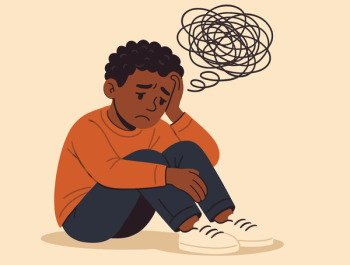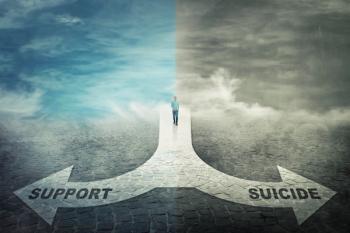
Suicide: A Biography
Predicting suicide remains challenging at best. For each suicide there is often a complex web of life experiences, personality traits, psychiatric diagnoses, cultural beliefs, relationship issues, and acute stressors that ultimately converge on a person’s decision to take one’s life.
Our greatest challenge in psychiatry is preventing the suicide of a patient. News of the suicide of a patient, acquaintance, colleague, or friend elicits a deep feeling of dread, often accompanied by confusion, disbelief, and sadness. The
Clinically, predicting suicide remains challenging at best. For each suicide there is often a complex web of life experiences, personality traits, psychiatric diagnoses, cultural beliefs, relationship issues, and acute stressors that ultimately converge on a person’s decision to take ones life. This article is the first in a 4-part series on suicide and will provide a general overview of the topic. Subsequent articles will examine the various factors that can increase the risk of suicide, provide an overview of the complexity and challenges in attempting to accurately screen for and identify a patient at high risk for suicide, and discuss appropriate intervention options.
“Suicide”
The word suicide, according to the
History
The history of suicide among humans is a nebulous subject. Currently, we have no way of accurately determining when the first suicide occurred, what the motivating factors leading to the suicide were, or when the concept of suicide was conceived. According to
1. Suicide as an alternative to enslavement by a hostile enemy. The choice to commit suicide at Masada by the Jewish people is an example of how liberty and freedom influenced the decision to die rather than be enslaved.6
2. Suicide as a chosen end of pain and suffering from a chronic injury or illness. Because improvement in medical science provides more options to prolong life, the question of quality of life becomes all the more important. Euthanasia has become a prominent subject, and mental health experts and other medical professionals are expected to serve a role in solving the controversies, and in physician-assisted suicide.7,8
3. Suicide associated with shame over failure to protect ones family/culture/country. Examples include Seppuku (AKA harakiri) “cutting the belly”often called an “honor suicide,” and suicide in Ancient Greece after military defeat.9
4. Suicide for a cause such as Kamikaze fighters and suicide bombers. There may be close associations of thought process in such suicides to the same as those in euthanasia, honor-suicide, and suicide related to depression.10
5. Suicide to end severe emotional distress which is the more common suicide that mental health professionals face and attempt to treat.
While study of archeology and human cultures may give us some idea of what happened, it is impossible to really understand what people thought. It was only around 4000 BC when the Sumerian writings started to give us a chance to probe into human thinking. The story of suicide is similar. The first ever note considered to be a
Some of the earliest recorded attention to the subject of suicide in the western world can be traced to ancient Greece, where it was discussed more from a societal or state perspective, rather than an individual one. Plato viewed it as a negative behavior except in certain circumstances, whereas Aristotle considered it as a loss to society.12 Sometimes suicide was encouraged, such as sati (suttee) in ancient Hindu culture, or enforced13; for example, hemlock for Socrates, or in the service of honor or a noble cause.
The concept of suicide focused on the act of suicide without much distinction between “imposed” or “volitional” suicide. In Europe, it was the fifth century when suicide became a subject in religious thought with St Augustine declaring it as immoral.14 Suicide became taboo, and the act and the doer both at risk of being publicly abhorred extended from religion into the cultural realm. The underreporting of suicide even in present-day culture has its roots in these historical judgments.
Evolution of the concept of suicide
As society progressed towards relative freedom of thought, the loosening of the concept of “sin” as the cause and effect of suicide allowed more inquiry into the act of suicide.
These developments led to the study of suicide from a perspective of influences extrinsic to an individual. Several theories tying industrialization, the movement of the female population into the mainstream workforce, and social status compatibility were brought forward as related to suicide.16-18 A study by
Mental illness and suicide
Steady advances in knowledge and science linked suicide with the medical field as early as the 17th century.22 The role of mental illness in suicide became prominent in recent decades.23 Advancement in understanding neurobiology and behavior has led to the proposal of a stress-diathesis model in which a combination of genetic predisposition and exposure to stress can affect suicidal behavior. It separates risk factors into trait-dependent and state-dependent.24 All of these discoveries have led to increased efforts to understand and prevent suicide.
The
• Development and clarification of accurate nomenclatures such as suicide ideation, intent, and suicide behavior26
• Identification of risk and protective factors of suicide
• Developing systematic prevention strategies in various sectors such as health care, business, legal, political, cultural, educational, and media
Given that suicide is such a complex, multifaceted issue, it becomes extremely hard for a single sector to be effective in preventing suicide. Health care professionals often find themselves feeling and/or held responsible for failing to prevent a suicide. Thus, clinicians need to follow due diligence with all patients.
Future articles will explore in greater detail the numerous factors that can increase/decrease the risk of suicide, the complexity and challenges in attempting to accurately screen for and identify a patient at high risk for suicide, and appropriate intervention options.
Dr Khan is Medical Director, Psychiatric Services, Wentworth-Douglass Hospital, Dover, NH; Mrs Fuad is Master of Science candidate, Johns Hopkins University, Baltimore, MD.
References
1. Hedegaard H, Curtin SC, Warner M. ). Suicide mortality in the United States, 1999–2017. NCHS Data Brief. 2018;330:1-8.
2. Suicide Prevention Resource Center. Suicide by Age. 2017.
3. Online Etymology Dictionary. Suicide.
4. Centers for Disease Control and Prevention. Preventing Suicide. 2019.
5. Harari YN. Sapiens: A Brief History of Humankind. New York, NY: Random House; 2014.
6. Schwartz M, Kaplan KJ.. Judaism, Masada, and suicide: a critical analysis. OMEGA. 1992;25:127-132.
7. Ricou M, Wainwright T. The psychology of euthanasia: why there are no easy answers. Eur Psychol. 2019;24:243-256.
8. Thurston A. Physician-assisted death: a selected annotated bibliography. Law Lib J. 2019;111:31-69.
9. Roberts K, Miller M, Azrael D. Honor-related suicide in the United States: a study of national violent death reporting system data. Arch Suicide Res. 2019;23:34-46.
10. Greenland A, Proulx D, Savage DA. Dying for the cause: the rationality of martyrs, suicide bombers and self-immolators. Rational Soc. 2020;32:93-115.
11. Erman A. The Ancient Egyptians: A Source Book of Their Writings. New York, NY: Harper Torchbooks; 1966.
12. Cholbi M. Suicide. In Zalta EN, Ed. The Stanford Encyclopedia of Philosophy. Metaphysics Research Lab: Stanford University, CA; 2017.
13. Thakur P. A journey of Hindu women from Shakti to sati in ancient India. Int J Eng Tech Sci Res. 2017;4:383-385.
14. De Leo D. DSM-V and the future of suicidology. Crisis. 2011;32:233-239.
15. Durkheim É, Simpson G, Spaulding JA. Suicide: A Study in Sociology. London, UK: Routledge; 2002.
16. Anderson O. Did suicide increase with industrialization in Victorian England? Past Present. 1980;86:149-173.
17. Newman JF, Whittemore KR, Newman HG. Women in the labor force and suicide. Soc Probl. 1973;21: 220-230.
18. Lester D. Economic factors and suicide. J Soc Psychol. 1988;128:245-248.
19. Morris M, Crooks C. Structural and cultural factors in suicide prevention: the contrast between mainstream and Inuit approaches to understanding and preventing suicide. J Soc Work Pract. 2015;29:321-338.
20. Duberstein PR, Conwell Y, Conner KR, et al. Poor social integration and suicide: fact or artifact? A case-control study. Psychol Med. 2004;34:1331-1337.
21. Ceccherini-Nelli A, Priebe S. Economic factors and suicide rates: associations over time in four countries. Soc Psychiatry Psychiat Epidemiol. 2011;46:975-982.
22. Anton J, Van Hoof L. A Historical Perspective on Suicide: Comprehensive Textbook of Suicidology. New York: The Guilford Press. 2000: 96-123.
23. Silverman MM, Maris RW. The prevention of suicidal behaviors: an overview. Suicide Life-Threat Behav. 1995;25:10-21.
24. Mann JJ, Arango V. Integration of neurobiology and psychopathology in a unified model of suicidal behavior. J Clin Psychopharmacol. 1992;12(Suppl):2S-7S.
25. World Health Organization. Preventing Suicide: A Global Imperative. 2014.
26. Crosby A, Ortega L, Melanson C. Self-Directed Violence Surveillance: Uniform Definitions and Recommended Data Elements.
Newsletter
Receive trusted psychiatric news, expert analysis, and clinical insights — subscribe today to support your practice and your patients.















